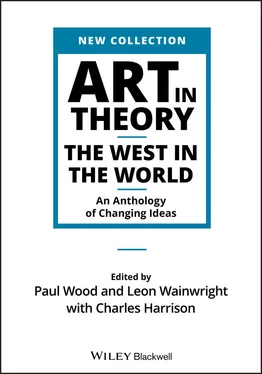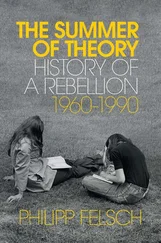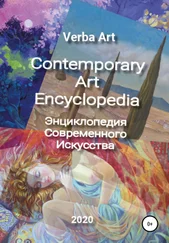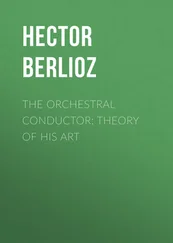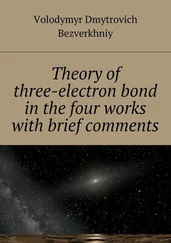IIB4(iv) William Wales An account of music and dancing in Tahiti, 1773
The previous extracts have all been taken from Cook’s first voyage. The remainder are from his second voyage with the Resolution and Adventure between 1772 and 1775. William Wales (1734–98) was the astronomer on this voyage. In his journal for September 1773 he gives an account of the music, dancing and dramatic performance with which the voyagers were entertained in Tahiti. In a fashion which echoes other parallels drawn with European arts and crafts, here Wales makes relatively favourable comparisons with European dance and theatre, including an audacious one with the leading actor on the London stage, David Garrick. In later life Wales taught mathematics at Christ’s Hospital school in London. Although it cannot be definitively proved, some believe that the stories of his sailing in the Southern Ocean, with which he was renowned for entertaining the schoolboys, planted a seed in the receptive mind of his pupil Samuel Taylor Coleridge, whose Rime of the Ancient Mariner appeared in 1798. This extract is taken from The Journals of Captain James Cook on his Voyages of Discovery: The Voyage of the Resolution and Adventure 1772–1775 , ed. J. C. Beaglehole, Cambridge University Press, published for the Hakluyt Society, 1968–1969, vol. 2, Appendix V, ‘Wales’s Journal’, pp. 804–5.
[11th September 1770] … This Afternoon went with some of the Officers to the House of the Aree of the district where the Ships lay, and who is Brother to the Principal King, or Aree of the Whole Island; where we were entertained with what they call a Heava ; that is an entertainment of Music and Dancing. The Music was performed on three Drums of different Tones, arrising from their different magnitudes & form. The Base, or deepest toned one, was about 12 or 14 Inches high, and perhaps as much in diameter: The Middle one was about 2½ feet high and about 10 Inches diameter; and that which had the highest tone, might be near 3½ feet high and about 7 or 8 Inches Diameter. Their Heads were made of Shark’s Skin and braced much in the same Manner as ours are, only without the slides which ours have for bracing and unbracing; and they beat them with their fingers. The Dancing, as we called it, was performed by two Girls, one of whom is the daughter of the Aree, and accounted a capital Performer, under the direction of an old Man, who travills from place to place for that purpose, and is said to have made great improvement to this divirsion, on which account he is held in great Esteem. The Dress of the Performers is extraordinary and very grand on these Occasions. It consists of a great quantity of their cloth of different Colours bound very tight around the Waist with Cords, and disposed so as to stand off sideways from the Hips in a vast number of plaits or folds, to the extent of a fine Lady’s Hoop‐Peticoat when in a full Dress. To this is attached a parcel of Coats below, and a sort of Waist coat without sleeves above. Round the Head is wound a great quantity of plaited Hair in such Manner as to stand up like a Coronet, and this is stuck full of small floures of various colours which renders the Head‐Dress, in My opinion, truly elegant. The Dexterity of the Performers does not lie in the Motion of the feet; but in that of the Hips, Arms, Fingers and Mouth: all which they keep in motion together, and y eprincipal skill of the performer seems to lie in contriving to have these several motions as opposite & contrary to one another as possible. These Motions they perform in all attitudes viz standing sitting kneeling Lying, as also with their face in all directions as East, west &c. all which is directed by the above mentioned old Man who not only gives the word, but sets the example also. In this part of the Heava , although the principal with them, there is little very entertaining to an European Eye. The wriggling of their Hips, especially as set off with such a quantity of Furbeloes, is too Ludicrous to be pleasing, and the distortion of their mouths is realy disagreeable, although it is for this the young Princess is chiefly admired. Her face is naturally one of the most beautiful on the Island; but in these performances she twists it in such a manner that a stranger would some times realy question whether her right Eye, Mouth & left Ear did not form one great Gash passing in an oblique direction across her face.
It may be supposed this Exercise is too violent to last long at a time, especially in this climate and under such a load of dress: accordingly the dancing seldom lasts longer than about 5 or 6 Minutes at a time, and in the intervals we were entertained with the performances of 5 or 6 men which sometimes consisted in a sort of figure Dance, wherein they were very carefull that their feet kept exact time to the Drums; at others in the action of short Interludes, which were in my opinion by far the best parts of the Performance, and realy diverting. The subjects of these were sometimes tricks which they are supposed to put on one another either through cunning, or under cover of a dark night; but oftener turn on intimaces between the Sexes, which at times they carry to great lengths. These Parts were performed exceeding well, the command which they have over their Features and Countinance is extraordinary, and I am not certain that I ever saw M rGarrick perform with more propriety than one Man did most of his parts. Their Stage, if I may be allowed the Expression, is under a Shed, open in the Front, and at one end is their dressing Room; into, and out of which they make their exits , and enterances as occasion requires; & the floor is spread with very curious Mats: In short, it may be said without exaggeration that the Drama, is advanced in these Islands, very far beyond the Age of Thespis.
IIB4(v) George Forster An account of artefacts at Tonga, October 1773
George Forster (1754–94) accompanied his father, Johann Reinhold Forster, as a scientist on Cook’s second voyage. On the strength of his work during the voyage, and the book he published after his return, Forster was elected to the Royal Society at the age of twenty‐three, in 1777. The present extracts describe a range of ‘curiosities’ he saw at Tonga in October 1773 when the ships put in for provisions after journeying west from Tahiti. That the islands became known as ‘The Friendly Islands’ gives some idea of the reception they found. Forster talks about fishhooks, combs, personal ornaments, woven baskets and weapons. All of these he regards as ‘neat’ and ‘elegant’, testifying to workmanship and good taste. Once again, we find a favourable comparison with European artisanal skills. (His later response to the Easter Island stone statues, which, as it were, trespass on the territory of ‘Art’, is significantly different.) Forster’s positive response to Polynesian artefacts may be related to his sympathy with the radical politics emerging in Europe, which tended to view the ways of life of newly discovered peoples in America and Oceania as a point of critical leverage against the artificiality and corruption of contemporary Europe. After his journeys to the Pacific, Forster had a variety of academic jobs in his native Baltic states and Germany. In late 1792, after the French invaded Mainz, where he was librarian at the university, Forster became a founder member of the city’s Jacobin Club and helped organize the National Convention of the new Republic of Mainz. In 1793 he travelled to Paris to request the absorption of Mainz into the revolutionary French republic, but he died of illness there in January 1794. This extract is taken from George Forster, A Voyage Round the World [1777], edited by Nicholas Thomas and Oliver Berghof, Honolulu: University of Hawaii Press, 2000, vol. 1, pp. 236 and 238.
Читать дальше
